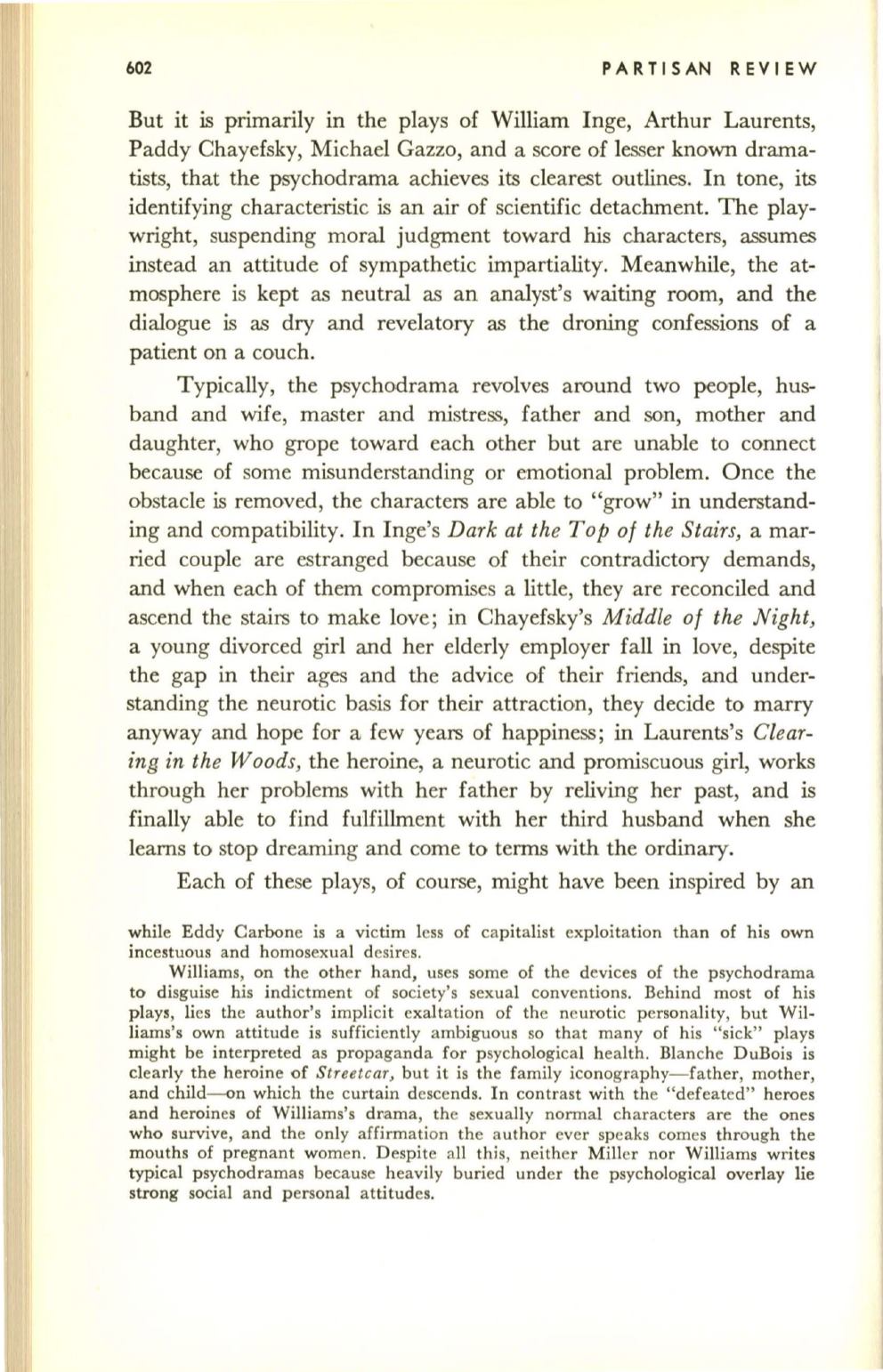
602
PAR
TIS AN REV l EW
But
it is primarily in the plays of William Inge, Arthur Laurents,
Paddy Chayefsky, Michael Gazzo, and a score of lesser known drama–
tists, that the psychodrama achieves its clearest outlines.
In
tone, its
identifying characteristic is an air of scientific detachment. The play–
wright, suspending moral judgment toward his characters, assumes
instead an attitude of sympathetic impartiality. Meanwhile, the at–
mosphere is kept as neutral as an analyst's waiting room, and the
dialogue is as dry and revelatory as the droning confessions of a
patient on a couch.
Typically, the psychodrama revolves around two people, hus–
band and wife, master and mistress, father and son, mother and
daughter, who grope toward each other but are unable to connect
because of some misunderstanding or emotional problem. Once the
obstacle is removed, the characters are able to "grow" in understand–
ing and compatibility.
In
Inge's
Dark at the Top of the Stairs,
a mar–
ried couple are estranged because of their contradictory demands,
and when each of them compromises a little, they are reconciled and
ascend the stairs to make love; in Chayefsky's
Middle of the Night,
a young divorced girl and her elderly employer fall in love, despite
the gap in their ages and the advice of their friends, and under–
standing the neurotic basis for their attraction, they decide to marry
anyway and hope for a few years of happiness; in Laurents's
Clear–
ing in the Woods,
the heroine, a neurotic and promiscuous girl, works
through her problems with her father by reliving her past, and is
finally able to find fulfillment with her third husband when she
learns to stop dreaming and come to terms with the ordinary.
Each of these plays, of course, might have been inspired by an
while Eddy Carbone is a victim less of capitalist exploitation than of his own
incestuous and homosexual desires.
Williams, on the other hand, uses some of the devices of the psychodrama
to disguise his indictmen t of society's sexual conventions. Behind most of his
plays, lies the author's implicit exaltation of the neurotic personality, but Wil–
liams's own attitude is sufficiently ambiguous so that many of his " sick" plays
might be interpreted as propaganda for psychological health. Blanche DuBois is
clearly the heroine of
Streetcar,
but it is the family iconography-fa ther, mother,
and child--<>n which the curtain descends. In contrast with the " defeated" heroes
and heroines of Williams's drama, the sexually normal characters are the ones
who survive, and the only affirmation the a uthor ever speaks comes through the
mouths of pregnant women. Despite all this, neither Miller nor Williams writes
typical psychodramas because heavily buried under the psychological overlay lie
strong social and personal attitudes.


